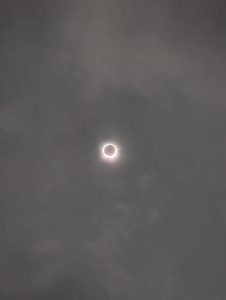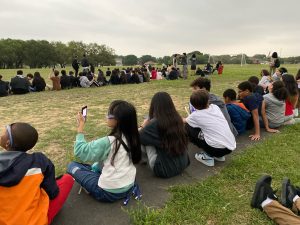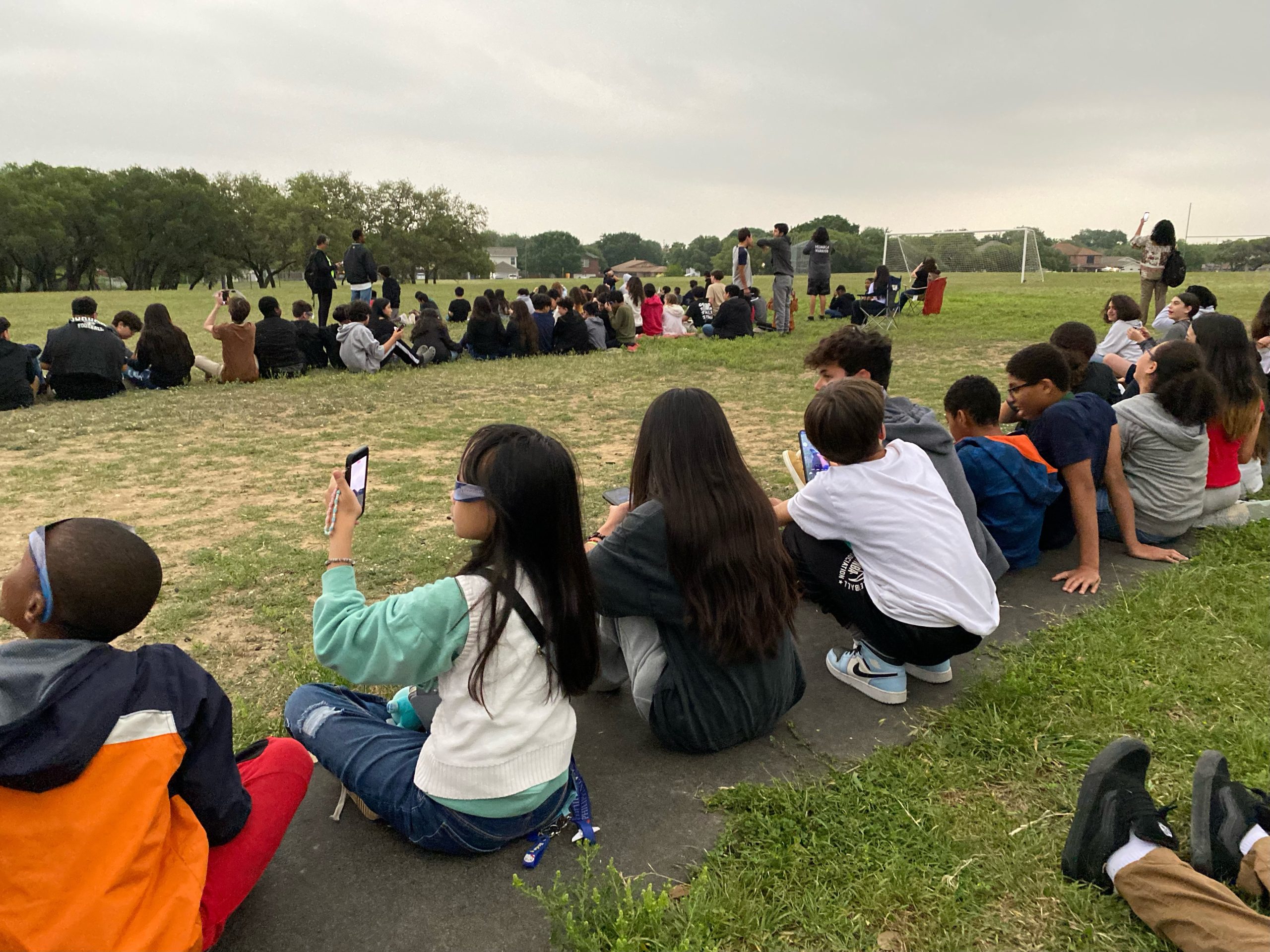Hide and Seek
Gianna Marques-Ozuniga (8)

The moon takes approximately a month or 27 days to orbit around the earth once. It takes 365 days for the earth to orbit the sun. On the rare occasion that the moon and the sun line up perfectly, blocking the light from the sun to reach earth is what scientists call an occultation or what normal people call “a solar eclipse. There are 4 types of occultations. A Total solar eclipse, an Annular solar eclipse, A Partial solar eclipse, and a Hybrid solar eclipse.
The most common is a partial eclipse happening twice a year in the same location. This eclipse is called a “partial eclipse” and is given that name because it’s when the moon is partially covering the sun. One half is bright and the other is dark. The least common is the total eclipse which happens every 360 to 410 years in the same location. A total eclipse is when the moon and the sun meet and the moon completely blocks the sun. This results in the sky becoming dark and looking as if night time. That stage is called the totality stage. However this stage only lasts a couple of minutes.
On April 8th a total eclipse crossed over the united states being able to be seen from northern Maine all the way to southern Texas. The last total eclipse in the United states was in 2017. The last total eclipse in Texas was in 1878 (having taken place in Dallas). The last Total eclipse in San Antonio Texas was in 1397. It’s been 627 years since the last total eclipse in this specific location.

Many school districts such as Boerne ISD closed their schools down as recognition of a historic event. However, the majority of the schools in Texas stayed open and turned the eclipse into a learning experience. Our school had students in their 6th period class go outside to an assigned location to experience this once in a lifetime event. Each student was given viewing glasses and got to enjoy this moment with their friends and classmates!
8th grader Rayanne Garcia says “It was kind of boring at first because of all the clouds, but once it started clearing up it was cool seeing the eclipse, And I was happy I was able to see it with some of my friends!”. Although the weather was horrible and cloudy you could still experience the sky darkening and light up again! At times you could also see the eclipse in its partial stage. According to research the best place to experience the eclipse was in Mazatlan, Mexico. The eclipse was so clear you could physically see the moon fully cover the sun.
The eclipse was a fun experience in or outside of school and is a core memory that everyone can share with generation to generation. Even though the next total solar eclipse won’t cross San Antonio for another 300 years, the next total solar eclipse in Texas will occur in 2045. In another 20 years!!
